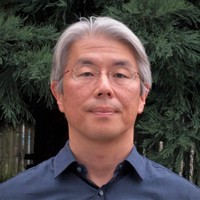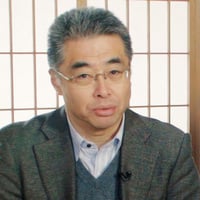#HI-04-06 Sino-Japanese Interactions Through Rare Books
About Course
Keio UniversityDescription
Why join the course?
Books have played a major role in the formation of Japan’s culture, particularly those brought from China. On this course we’ll examine how big an impact these books have had, as well as looking at how books and religion are connected in Japan and East Asia, and the history of publishing in Japan.
Understand more about Chinese books, language and culture
Through the course you’ll discover more about the different types of Chinese books, their characteristics and their history. We’ll also look at books with strong Chinese influences and examine the culture of the area of the world that use the Chinese writing system.
Learn about the development of Japanese culture
We’ll then look at how these books made their way to Japan and how Chinese culture influenced Japanese culture. In particular we’ll focus on the Analects of Confucius and how the book has been received in Japan – from its introduction in the 3rd Century to how it’s considered today.
In addition we’ll look at books on Chinese studies from medieval to early modern Japan, how books from China and Korea were studied and disseminated and how the process created new types of book like commentaries and revised editions.
Explore the connection between books and religion in East Asia
You’ll also learn about the connections between publishing and religion – examining the influence of Zen Buddhism on Japanese culture.
What topics will you cover?
- History of textual culture in East Asia and Japan.
- Evolution of printing technology in Japan and its relationship with religion.
- Influence of China and Korea on Japanese book culture.
- Publishing activity by Zen temples in the medieval Japan.
- Publishing activity by scholars in pre-modern Japanese society.
- Publishing activity by local and central governments for education.
- Variety of types of books in Chinese studies.
- Brief introduction of well-known Chinese poem collections: Santishi and Tangshi xuan.
- Analects of Confucius, its reception, transition and influence on Japanese society.
Who will you learn with?
I specialise in Chinese and Japanese literature at Keio’s Institute of
Oriental Classics and I am the lead educator of the “Sino-Japanese
Interactions Through Rare Books” course.
I am a professor at the Keio Institute of Oriental Classics. I am interested in East Asian book culture and the transmission of Chinese scholarship in Japan.
I am a professor at Keio University’s Faculty of Letters. I specialize in Sino-Japanese literature and I am one of the educators of the “Sino-Japanese Interactions Through Rare Books” course.
Who developed the course?
Keio University is Japan’s first modern institution of higher learning, and since 1858 has established itself as a leader in Japan through its continued commitment to education, research and medicine.
What Will I Learn?
- Explain the relationship between books and religion in East Asian history.
- Describe the role of Pre-modern Zen temples in book culture and printing technology.
- Describe the role of Confucian scholars in book culture and their research activity.
- Discuss the contribution of China and Korea to Japanese book culture and the development of printing technology.
- Classify the types of books in Chinese studies.
- Discuss the impact of Analects of Confucius in pre-modern Japanese society.
- Explore the value of Analects of Confucius in modern Japanese society.
- Explain how the books in Chinese studies incorporated and influenced on Japanese culture.
Topics for this course
Introduction
Welcome to the course00:03:35
Do you have any foreign-language books in your house?
East Asian History at a Glance
East Asian Textual Culture and Mahayana Texts
Printing as duplicating symbols
Printed books as replicas of manuscripts
Importing Chinese Culture
Books for practical purposes
This course has a lot to say about the history of Japanese culture, but also about the evolution of Japanese printing technology and its relationship to religion, which I think is very good. I like the two parts about the influence of China and South Korea on Japanese book culture and the publishing activities of Japanese Medieval Zen temples. I recommend it to you.
I like Chinese books very much. I like the explanation of three Poems and Tang Poetry Mystery in this course. I speak it very well.
I have never known the close relationship between Chinese culture and The development of Japanese culture. In this course, I have seen how these Chinese books were introduced to Japan and how Chinese culture influenced Japanese culture. We will pay special attention to the Analects, and how it was accepted in Japan, from its introduction in the third century to today's view.
I like Chinese culture very much. Through this course, I can learn more about different types of Chinese books, their characteristics and history. I have also read books that have been strongly influenced by China and have examined the cultures of the regions where the Chinese writing system is used. That's great.






